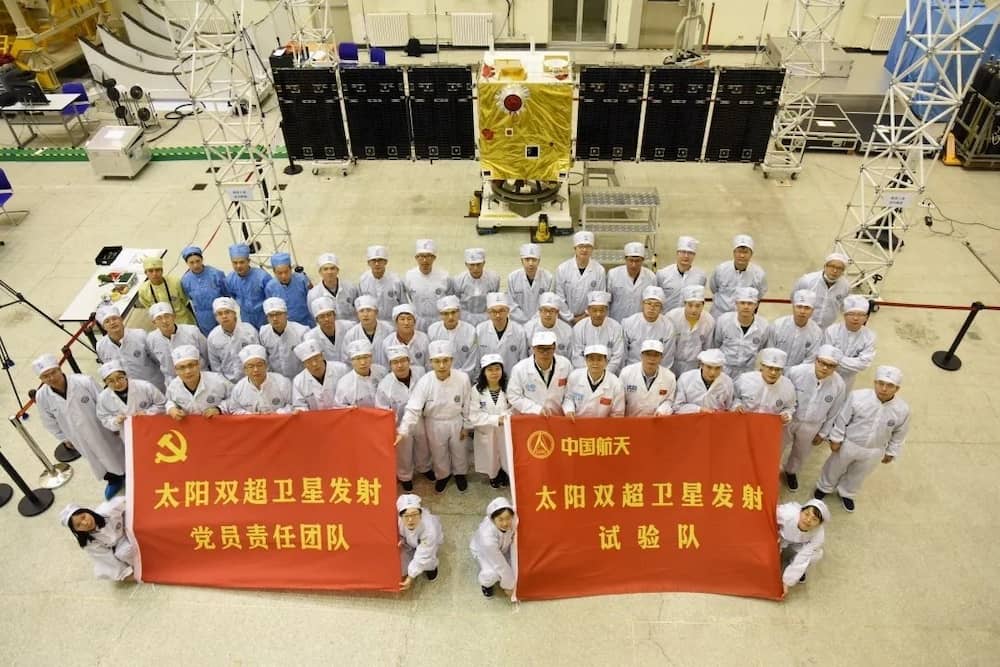Featured Image: CNSA
Lift Off Time | October 14, 2021 – 10:51 UTC | 6:51 PM CST |
|---|---|
Mission Name | CHASE |
Launch Provider | China Aerospace Science and Technology Corporation (CASC) |
Customer | N/A |
Rocket | Long March 2D |
Launch Location | LC-9, Taiyuan Satellite Launch Center, China |
Payload mass | 500+ kg (more than 1,100 lb) |
Where did the satellite go? | Sun Synchronous Orbit (SSO) |
Did they attempt to recover the first stage? | No, this is not a capability of the Long March 2D rocket. |
Where did the first stage land? | It crashed on land in northern China. |
Did they attempt to recover the fairings? | No, this is not a capability of the Long March 2D rocket. |
Were these fairings new? | Yes |
How was the weather? | N/A |
This was the: | – 97th orbital launch attempt of 2021 – 55th launch of a Long March 2D rocket – 54th successful launch of a Long March 2D rocket |
Where to watch | There is no replay currently available for this launch |
How Did It Go?
The China Aerospace Science and Technology Corporation (CASC) has successfully launched a solar observation satellite to a Sun Synchronous Orbit (SSO). The Chinese Hα Solar Explorer, or CHASE, will be gathering solar data and partnering with preexisting satellites to further advance the interpretation of solar data.
What Is CHASE?
CHASE, which stands for Chinese Hα Solar Explorer, will, as the name suggests, take highly detailed images of the sun in the H-alpha waveband. This band is 656.28 nm and sits in the deep-red, but still visible part of the electromagnetic spectrum.

H-alpha is nothing new. Ground based telescopes and other satellite have been observing the sun at this wavelength for long before now. CHASE uses a Hα Imaging Spectrograph (HIS) which will not be affected by the rotation of the Earth (can image 24-7) and will not have any atmospheric effects applied by Earth’s atmosphere.
Objectives
CHASE has a few objectives which the team hopes to accomplish including the cause and triggers for solar eruptions and flares. Normally, these events are predicted by active regions on the sun. Typically, these active regions are detectable early, but only in the H-alpha band. In addition, it will calculate the velocity and temperature of objects just after they leave the surface of the Sun.
What Is The Long March 2D?
The Long March 2D (also known as the Chang Zheng 2D, CZ-2D and LM-2D), is a two-stage rocket, predominantly used for launching satellites to low-Earth orbit (LEO) and SSO. The Long March 2D is a two-stage version of the Long March 4, and is the smallest of all the active Long March rocket series.
A special note for this launch is the use of four grid fins positioned near the top of the first stage. These grid fins served the purpose of constraining and controlling the drop area of the first stage, which was conducted successfully. Despite the use of grid fins, also seen on reusable rockets, the Long March 2D is not reusable.

The rocket’s maiden flight was on August 9, 1992, and it has since had a near perfect launch history, with the only incident being a partial failure on December 28, 2016.

First Stage
The first stage is 27.91 m in length, and uses four YF-21C engines. YF-21C is the name given to the engine when it is part of a module comprised of four YF-20C engines. The engines burn dinitrogen tetroxide (N2O4 ) and unsymmetrical dimethylhydrazine (UDMH) in a gas generator cycle. Each engine produces 731 kN of thrust at sea level, with a specific impulse (ISP) of 259 seconds. In vacuum this is 816 kN of thrust with an ISP of 289 seconds.
Second Stage
The second stage is 10.9 m in length, and uses one YF-24C engine, which similarly to the first stage engines, burns dinitrogen tetroxide (N2O4 ) and unsymmetrical dimethylhydrazine (UDMH) in a gas generator cycle. The name YF-24C means it is part of a module comprising a YF-22 engine and a YF-23 vernier.





